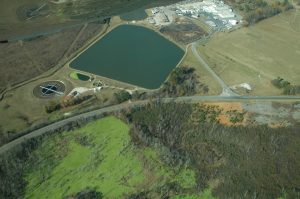Tyson Permit Public Hearing
Take Action:
Attend Public Hearing on Tyson’s Water Pollution Permit
The Alabama Department of Environmental Management (ADEM) will host a public hearing about Tyson Foods’ permit allowing polluted water discharges into Graves Creek and the Locust Fork from its Blountsville chicken processing plant. Please attend this hearing and help promote clean water in Graves Creek and the Locust Fork!
Tyson Blountsville Water Pollution Permit – Public Hearing
Tuesday, November 19 at 6pm
American Legion Post #129
1148 College St., Blountsville, AL 35031
Ways you can help:
1. Speak at the public hearing
2. Come to the hearing and show your support with your presence
3. Write a letter and deliver it (preferably with recreation photos) in person at the hearing
The new draft wastewater and stormwater discharge permit for Tyson’s Blountsville chicken processing plant is NPDES Permit Number AL0001449. This permit allows the discharge of approximately 1.3 million gallons of wastewater per day containing bacteria and nutrient pollution to Graves Creek, a tributary of the Locust Fork, and to the Locust Fork, a tributary of the Black Warrior River. It also allows Tyson to discharge polluted stormwater from the plant when it rains. The proposed discharges will occur upstream of popular public recreation areas on Graves Creek (Mardis Mill Falls) and the Locust Fork (King’s Bend, the new public access and scenic overlook at Hwy 79/US 231 bridge, the whitewater paddling section, Swann Covered Bridge, and Powell Falls).

Tyson’s Blountsville Processing Plant’s wastewater treatment plant and discharge (top center) discharges to a wetland (bottom left). The wetland then flows into Graves Creek, a tributary to the Locust Fork. Photo by Nelson Brooke. Flight provided by SouthWings.
Black Warrior Riverkeeper’s permit comments ask ADEM to make the following changes in the final permit:
1. better end-of-pipe limits for nutrients, bacteria, and biochemical oxygen demand;
2. the implementation of best available technology to treat pollutants;
3. limits on bacteria and other pollutants in stormwater discharged by Tyson;
4. treatment and pollution limits that reflect the importance of Graves Creek and the Locust Fork to the community and local economy;
5. treatment and pollution limits that reflect the downstream presence of threatened and endangered species and their federally protected habitat;
6. treatment and pollution limits that reflect the downstream presence of impaired streams and intention to reverse their impairments;
7. to remove the proposed pipe allowing direct discharge to the Locust Fork from the permit.

Tubing on the free-flowing Locust Fork of the Black Warrior River. Photo by Nelson Brooke.
A report recently released by Environmental Integrity Project identified Tyson’s Blountsville facility as the nation’s third most prolific discharger of the nutrient nitrogen from a slaughterhouse to an impaired stream. Graves Creek and the Locust Fork are already subject to a cap on the amount of nutrient pollution they can absorb (“Total Maximum Daily Load”) since they are both already significantly polluted by nutrients such as nitrogen & phosphorus. Nutrient pollution can cause excessive growth of algae, among other problems.
Please mark your calendar and attend the November 19 hearing to relay your use of Graves Creek and the Locust Fork, and the importance of them being cleaned up for recreation, wildlife, and the local economy.

Recreation at Graves Creek (Mardis Mill Falls).
Note: this Tyson facility on the Locust Fork is not the same as the Tyson facility that recently caused a massive fish kill after spilling wastewater into the Mulberry Fork. To learn more about that problem and to take action, click here.












